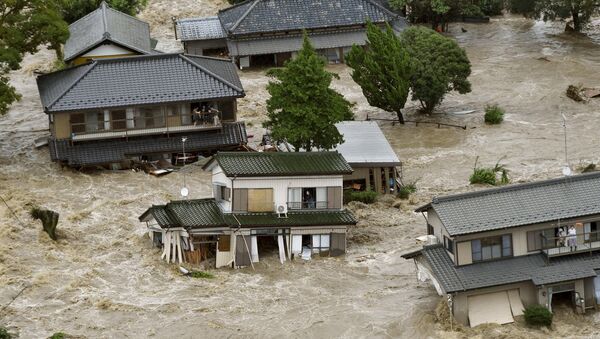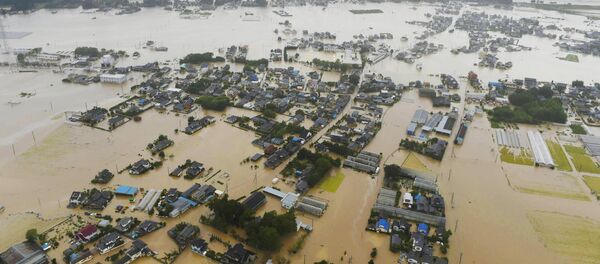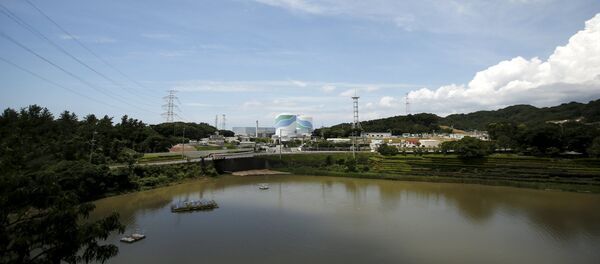TEPCO said rain had overwhelmed the site's drainage pumps, sending the contaminated water into the Pacific Ocean. Huge quantities of contaminated water were stored at the plant and used to cool melted fuel in three badly damaged reactors.
In a statement released earlier this month in anticipation of Etau, TEPCO warned that the typhoon "could affect" the Fukushima plant.
"To prepare for the heavy winds, the crane necks are lowered and all the equipment is secured with ropes and covers onsite as standard procedure for construction sites,” the statement said, in part.
"For heavy rains, Tepco has standard procedures to install rainwater guttering on the upper part of the water storage tanks and also to construct dikes around groups of tanks, which is applied to all of the recently added storage tanks."
Japan's meteorological agency warned that heavy rain would continue in the northeast, including Fukushima prefecture, until early Friday morning.
At least two people have died and several others are missing as a result of flooding, which has also forced the evacuation of hundreds of thousands people, the Guardian reported.
In March 2011, a tsunami triggered by a massive offshore earthquake sparked meltdowns in the reactors at the Fukushima Daiichi plant. It was the worst nuclear disaster since Chernobyl in 1986.




